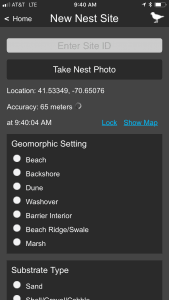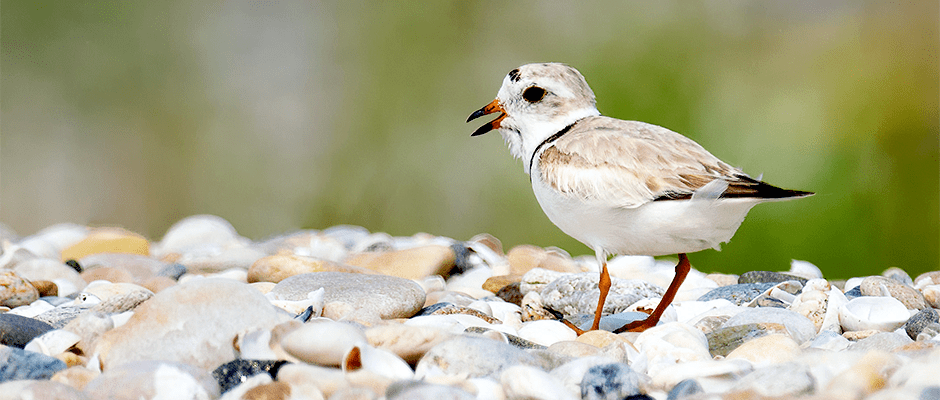Share this article
WSB: Mobile app gathers plover data across vast range
The threatened piping plover (Charadrius melodus) nests on North American coastlines from Maine to North Carolina, where biologists fear it faces growing threats from rising sea levels associated with climate change.
Those threats could make understanding its habitat selection particularly important, but gathering that kind of information across such a broad range isn’t easy. Neither is standardizing data collection from contributors in so many locations.
But a group of biologists came up with a novel way to bridge that expanse. They developed a smart phone app to link together more than 30 managers and conservation practitioners from government agencies and nonprofits up and down the coast to input data they gathered about where the bird nests.
They called it “iPlover,” and they wrote about the project in a paper in the Wildlife Society Bulletin.

The iPlover app lets wildlife managers log the characteristics of the sites where they find plover nests. Courtesy of Sara Zeigler.
“It worked extremely well,” said lead author Sara Zeigler, a research geographer and postdoctoral fellow with the U.S. Geological Survey at the Woods Hole Coastal and Marine Science Center in Woods Hole, Massachusetts. “It was a fairly minimal amount of money and extra time on the part of our partners, and we’re learning so much about how this species uses different habitats.”
After finding a nest during their routine monitoring work, users pulled out their phones to take a photo, capture the geolocation coordinates and record the date and time. Then they completed a simple habitat assessment. Was the nest on a beach? On a dune? In a marsh? Was it on sand? On gravel? Near shrubs? By a parking lot?
“It’s a very simple app, only a couple screens,” Zeigler said, but it provided important information about the birds that is yielding several potential papers.
Between 2014 and 2015, researchers from across the range collected data from 2,310 sampling points at nest sites and random spots on 83 beaches and barrier islands. Using a Bayesian network, they tried to predict what combination of land cover characteristics would be associated with the plover’s nesting sites. Focusing on New York’s Rockaway Peninsula, they used their model to predict areas with a high probability for nesting habitat.
They found the plovers primarily established nests on washovers — fans of sediment deposited by storm waves, followed by the backshore beach areas rarely touched by the tide and in dunes. These were usually sandy areas, they found, or sand mixed with shell fragments, gravel or cobble, with little or no vegetation.
But how they found these results may be as important as what they found. The app worked well in linking managers in the field with scientists in the lab, Zeigler said, and could result in findings that have on-the-ground implications.
Researchers are currently proposing to adapt iPlover, Zeigler said, to study other broad-ranging shorebirds and turtles.
“The approach would be very easy to tweak to use with other species,” she said.
TWS members can log into Your Membership to read this paper on early view in the Wildlife Society Bulletin. Go to Publications and then Wildlife Society Bulletin.
Header Image: ©Russ








